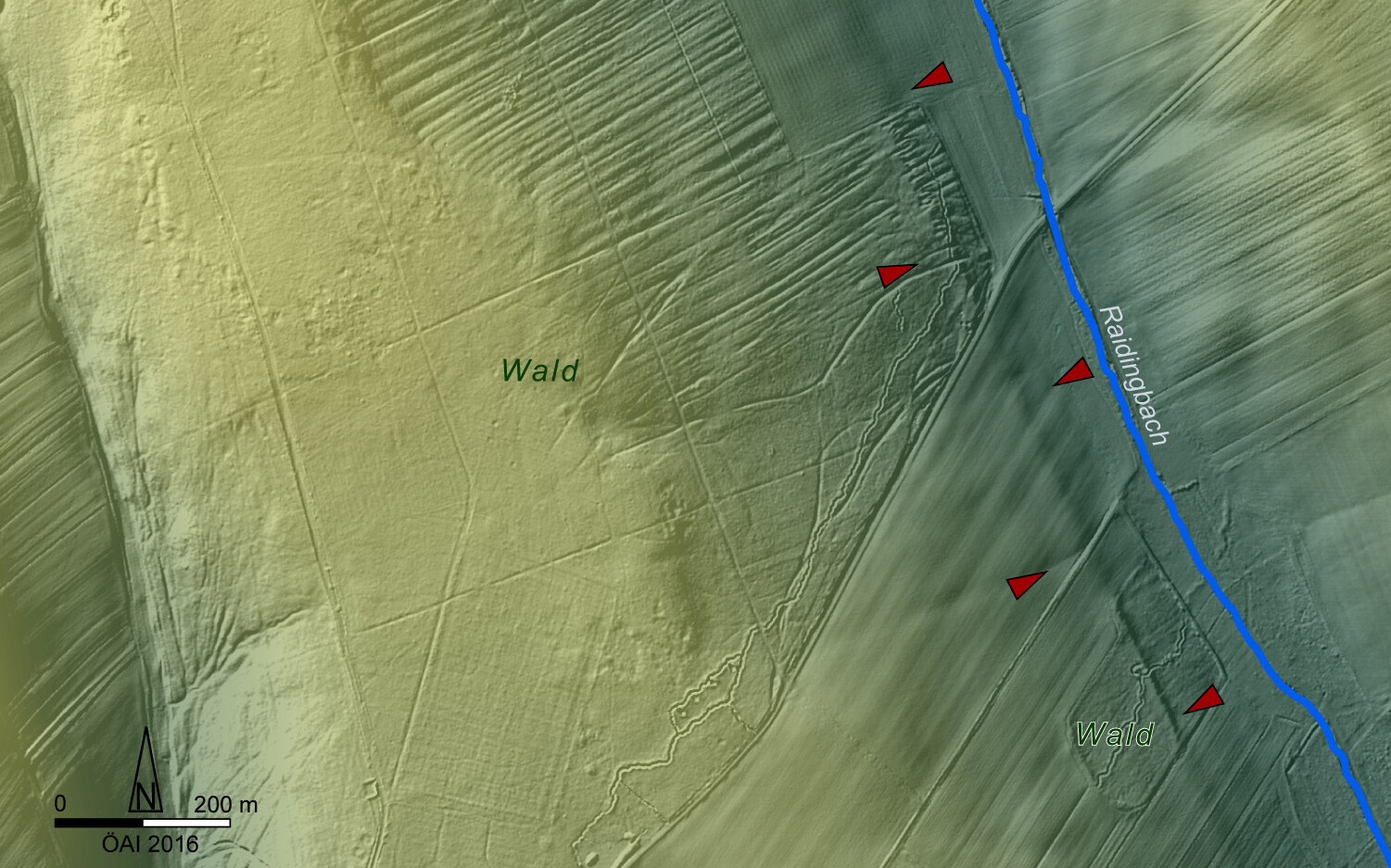Amber Road: Transit Route and Military Presence
The priority project for the Amber Road in northeast Pannonia consists of two detailed studies and is focused on the study of the important early imperial military base in Strebersdorf-Frankenau and the section of the Amber Road controlled by the military stationed here.
The Roman military camp and the vicus of Strebersdorf-Frankenau in northeast Pannonia
From 2008 to 2013 evidence for a more sophisticatedly structured Roman settlement site connected to the Amber Road was discovered by the OeAI through large scale geophysical surveys and small excavation trenches in the districts of Strebersdorf and Frankenau (Burgenland). The find site is 40 ha in size and is located directly along the transit route half way between the two Roman cities of different legal status, namely Colonia Savaria in the south and the municipium Scarbantia in the north. The particularly strategic location, clearly along territorial administrative boundaries, as well as the natural resources of extensive bog iron deposits were decisive for the construction of several military camps, a vicus 10 ha in size and work sites for iron processing.
Roman military camps
The contexts of four Roman fortifications are of particular importance for the issue of the seizure of power by the Romans in the early 1st century CE and the onset of military presence along the Amber Road. Three overlapping military camps of at most 2.1 ha in size and another temporary camp of around 20 ha document the changes in the Roman military strategy. Starting with a large scale field camp of the Tiberian-Claudian period the location was finally fortified with a permanent military camp of smaller size. Finds indicate the presence of a cavalry unit, the Ala Pannoniorum.
Iron smelting
In the vicinity of the camp numerous furnace rows for the industrial processing of bog iron are visible. Based on the distribution of smelting slag and the geomagnetic anomalies we can deduct rows of bloomeries. For their existence we propose a chronological sequence from the early Tiberian to the Flavian period allowing for their relationship to the military camps.
The find site is thus an excellent place for the reinterpretation of the systematic opening up of the provinces under Augustus and Tiberius through military bases and the economic factors of these military campaigns.
The find site is thus an excellent place for the reinterpretation of the systematic opening up of the provinces under Augustus and Tiberius through military bases and the economic factors of these military campaigns.
Detailed study on the infrastructure of a transit route in northeast Pannonia (Strebersdorf - Grosswarasdorf)
Starting from the verified military camp in Strebersdorf the infrastructure of the Amber Road is being studied through the extensive survey of a section 15 km in length. Extensive, vehicle-aided geomagnetic prospections as well as LiDAR-data evaluation in the districts of Großwarasdorf, Frankenau-Unterpullendorf, and Raiding provide clues on the route of the Amber Road as well as its infrastructure. An initial important result is the discovery of a Roman watchtower along the transit route.


